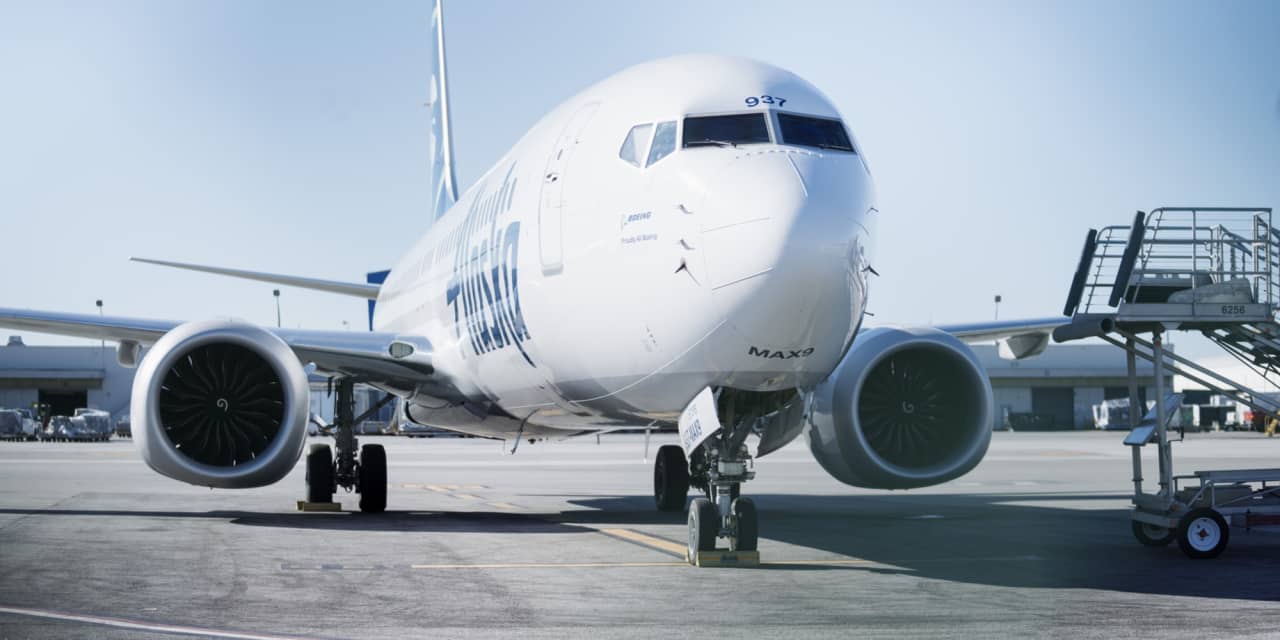As
Boeing
stock enters its second week of volatile trading following the 737 MAX 9 accident, and it’s still not quite clear whether its shares have been punished enough—or if there is more pain ahead.
This year was supposed to be very different for Boeing and Boeing stock. Things were supposed to be getting substantially better. Wall Street projects commercial jet deliveries to hit almost 700, up from roughly 530 in 2023. Free cash flow is expected to almost double, coming in north of $6 billion.
Then came the MAX 9 accident and subsequent grounding. Since an emergency door plug blew out of
Alaska Air
Flight 1282 on Jan. 5, Boeing shares were down $31.30 apiece, or about 13%. The
S&P 500
was up about 2% over the same span.
With some 605 million shares outstanding, the drop has wiped out some $19 billion in market capitalization. The question investors are wrestling with: Is that enough?
The good news, if there is good news for investors, is that the MAX 9 isn’t as big as the worldwide MAX grounding which began in March 2019 following two deadly crashes within five months. It also isn’t as significant as COVID-19, which decimated demand for air travel.
There are about 200 MAX 9 jets in service worldwide out of some 1,400 MAX jets. And the MAX 9, once ungrounded, should only amount to about 30 of the expected 700 deliveries, according to Wall Street estimates. Boeing should still have a better year in 2024 than it did in 2023.
Still, it doesn’t seem like the grounding will end as soon as Wall Street initially thought. The planes could have been back in the air after MAX 9 door plugs were inspected and any issues corrected. It appears, however, that the Federal Aviation Administration will be very cautious when approaching the jet’s return to service.
Wall Street estimates the grounding is costing Boeing $2 million to $3 million a day. A 50 or 60-day grounding would amount to about 2% of the projected 2024 free cash flow.
The hit to Boeing’s reputation is likely bigger than the hit to Boeing’s financials. How to value that hit, however, is very hard for investors to do.
”If it gets back down into the $170s or $180s, [that’s] a low-teens multiple on free cash flow,” says RBC analyst Ken Herbert. At $175 a share, Boeing would be trading at about 18 times the estimated 2024 free cash flow and 12 times the estimated 2025 free cash flow. Aerospace peers trade for closer to 20 times forward-year cash flow, says Herbert.
That low-teens multiple could be an adequate reflection of the valuation discount due to MAX safety issues. ”I’m not saying it will get there,” he adds. Herbert is trying to help investors pick a bottom in the stock. He rates shares Buy and has a $300 price target for shares.
Others argue that Boeing stock could be getting close to that level now. “While there’s no indication of buy interest yet, there are a few technical signs suggesting that stock could be getting short-term washed out,” says CappThesis founder, and market technician, Frank Cappelleri. Three he points out: The stock is near its 200-day moving average of $214, shares have also given back almost two-thirds of the rally off October lows, and shares are almost oversold based on 14-day relative strength, a typical interval for calculating oversold and overbought levels.
As for upside, the average analyst target price is $280 a share. Hitting $280 is a rise of roughly $60. Down to $175 is another loss of $40. That ratio of $60 to $40 gives investors a sense of the risk and the reward.
The other good news for Boeing shareholders, and the flying public, is that air travel still looks safe. Global accident rates in 2022 were roughly 35% lower than 10 years ago.
Still, the “incident should have never happened and it cannot happen again,” said the FAA in a Jan. 11 statement. No one, including Boeing, disagrees with that.
Write to Al Root at [email protected]
Read the full article here




